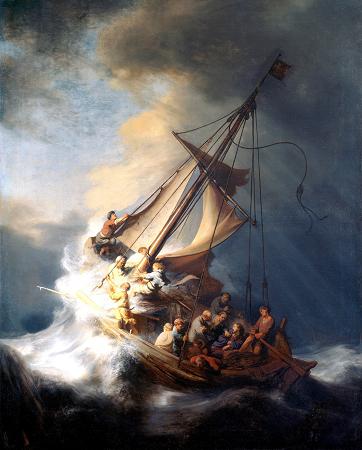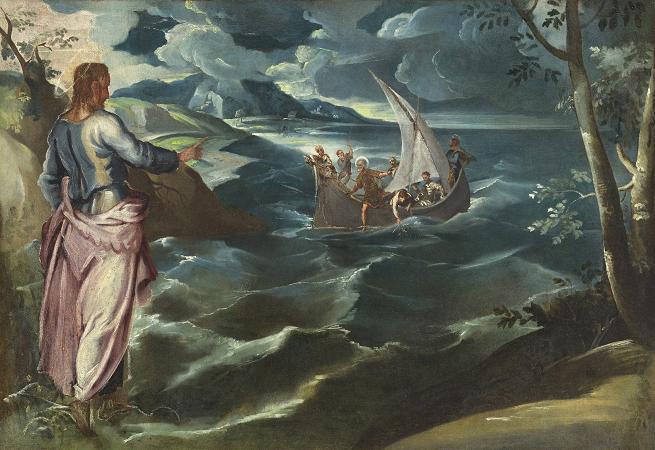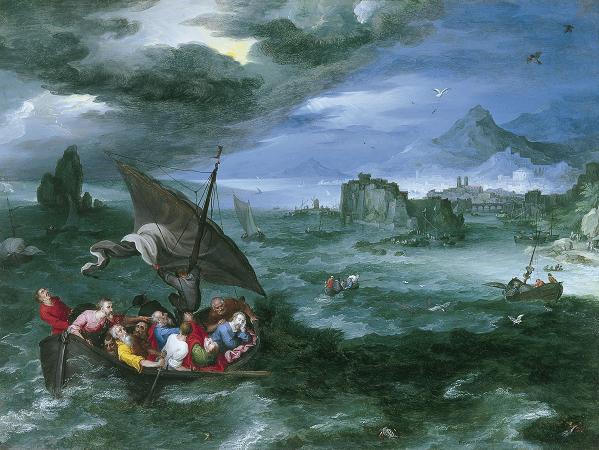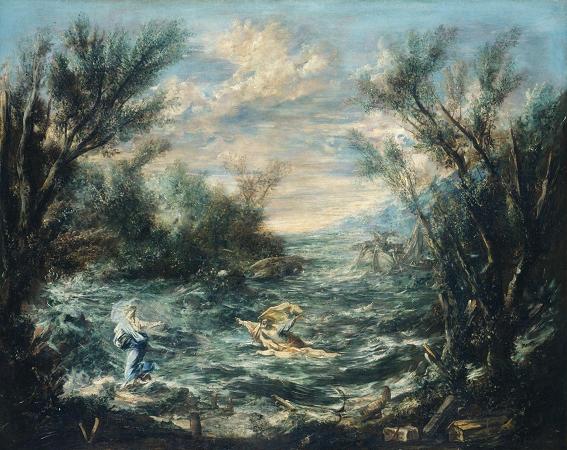Sea of Galilee. The Sea of Galilee, Lake Tiberias, Kinneret or Kinnereth, is a freshwater lake in Israel. It is the lowest freshwater lake on Earth and the second-lowest lake in the world, at levels between 215 metres and 209 metres below sea level. It is approximately 53 km in circumference, about 21 km long, and 13 km wide. Its area is 166.7 km 2 at its fullest, and its maximum depth is approximately 43 m. The lake is fed partly by underground springs, although its main source is the Jordan River, which flows through it from north to south. The Sea of Galilee is situated in northeast Israel, between the Golan Heights and the Galilee region, in the Jordan Rift Valley, the valley caused by the separation of the African and Arabian Plates. Consequently, the area is subject to earthquakes, and in the past, volcanic activity. This is evident from the abundant basalt and other igneous rocks that define the geology of Galilee. The lake has been called by different names throughout its history, usually depending on the dominant settlement on its shores. With the changing fate of the towns, the lake's name also changed. The modern Hebrew name, Kinneret, comes from the Hebrew Bible, the main source of the Christian Old Testament, where it appears as the sea of Kinneret in Numbers 34:11 and Joshua 13:27, spelled כנרות Kinnerot in Hebrew in Joshua 11:2. This name was also found in the scripts of Ugarit, in the Aqhat Epic. As the name of a city, Kinneret was listed among the fenced cities in. A persistent, though likely erroneous, popular etymology of the name presumes that the name Kinneret may originate from the Hebrew word kinnor in view of the shape of the lake. The scholarly consensus, however, is that the origin of the name lies with the important Bronze and Iron Age city of Kinneret, excavated at Tell el-'Oreimeh. However, there is no evidence that the city of Kinneret itself was not named after the body of water rather than vice versa, or for the origin of the town's name. All Old and New Testament writers use the term sea, with the exception of Luke who calls it the Lake of Gennesaret, from the Greek, the Grecized form of Chinnereth according to Easton. The Babylonian Talmud, as well as Flavius Josephus mention the sea by the name Sea of Ginosar after the small fertile plain of Ginosar that lies on its western side. Ginosar is yet another name derived from Kinneret. In the New Testament the term sea of Galilee is used in the gospel of Matthew, the gospel of Mark, and in the gospel of John as the sea of Galilee, which is the sea of Tiberias, the late 1st century CE name. Sea of Tiberias is also the name mentioned in Roman texts and in the Jerusalem Talmud, and was adopted into Arabic as, Lake Tiberias. From the Umayyad through the Mamluk period the lake was known in Arabic as Bahr al-Minya, the Sea of Minya, after the Umayyad qasr complex whose ruins are still visible at Khirbat al-Minya. This is the name employed by the medieval Persian and Arab scholars Al-Baladhuri, Al-Tabari and Ibn Kathir. In 1989, remains of a hunter-gatherer site were found under the water at the southern end. Remains of mud huts were found in Ohalo. Nahal Ein Gev, located about 3 km east of the lake, contains a village from the late Natufian period. The site is considered one of the first permanent human settlements in the world from a time predating the Neolithic revolution. The Sea of Galilee lies on the ancient Via Maris, which linked Egypt with the northern empires. The Greeks, Hasmoneans, and Romans founded flourishing towns and settlements on the lake including Hippos and Tiberias. The first-century historian Flavius Josephus was so impressed by the area that he wrote, One may call this place the ambition of Nature; he also reported a thriving fishing industry at this time, with 230 boats regularly working in the lake. Archaeologists discovered one such boat, nicknamed the Jesus Boat, in 1986. In the New Testament, much of the ministry of Jesus occurs on the shores of the Sea of Galilee. In those days, there was a continuous ribbon development of settlements and villages around the lake and plenty of trade and ferrying by boat. The Synoptic Gospels of Mark, Matthew, and Luke describe how Jesus recruited four of his apostles from the shores of the Kinneret: the fishermen Simon and his brother Andrew and the brothers John and James. One of Jesus' famous teaching episodes, the Sermon on the Mount, is supposed to have been given on a hill overlooking the Kinneret.
more...





